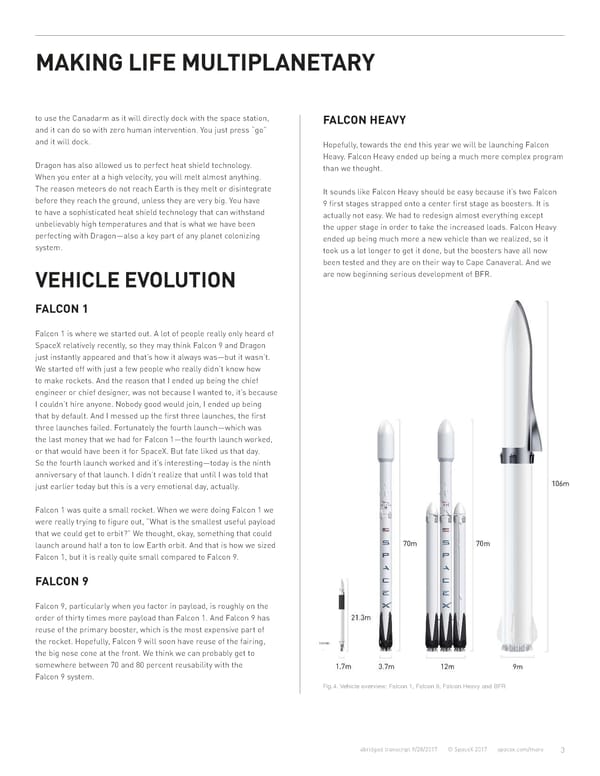MAKING LIFE MULTIPLANETARY to use the Canadarm as it will directly dock with the space station, FALCON HEAVY and it can do so with zero human intervention. You just press “go” and it will dock. Hopefully, towards the end this year we will be launching Falcon Heavy. Falcon Heavy ended up being a much more complex program Dragon has also allowed us to perfect heat shield technology. than we thought. When you enter at a high velocity, you will melt almost anything. The reason meteors do not reach Earth is they melt or disintegrate It sounds like Falcon Heavy should be easy because it’s two Falcon before they reach the ground, unless they are very big. You have 9 first stages strapped onto a center first stage as boosters. It is to have a sophisticated heat shield technology that can withstand actually not easy. We had to redesign almost everything except unbelievably high temperatures and that is what we have been the upper stage in order to take the increased loads. Falcon Heavy perfecting with Dragon—also a key part of any planet colonizing ended up being much more a new vehicle than we realized, so it system. took us a lot longer to get it done, but the boosters have all now been tested and they are on their way to Cape Canaveral. And we VEHICLE EVOLUTION are now beginning serious development of BFR. FALCON 1 Falcon 1 is where we started out. A lot of people really only heard of SpaceX relatively recently, so they may think Falcon 9 and Dragon just instantly appeared and that’s how it always was—but it wasn’t. We started off with just a few people who really didn’t know how to make rockets. And the reason that I ended up being the chief engineer or chief designer, was not because I wanted to, it’s because I couldn’t hire anyone. Nobody good would join, I ended up being that by default. And I messed up the first three launches, the first three launches failed. Fortunately the fourth launch—which was the last money that we had for Falcon 1—the fourth launch worked, or that would have been it for SpaceX. But fate liked us that day. So the fourth launch worked and it’s interesting—today is the ninth anniversary of that launch. I didn’t realize that until I was told that just earlier today but this is a very emotional day, actually. Falcon 1 was quite a small rocket. When we were doing Falcon 1 we were really trying to figure out, “What is the smallest useful payload that we could get to orbit?” We thought, okay, something that could launch around half a ton to low Earth orbit. And that is how we sized Falcon 1, but it is really quite small compared to Falcon 9. FALCON 9 Falcon 9, particularly when you factor in payload, is roughly on the order of thirty times more payload than Falcon 1. And Falcon 9 has reuse of the primary booster, which is the most expensive part of the rocket. Hopefully, Falcon 9 will soon have reuse of the fairing, the big nose cone at the front. We think we can probably get to somewhere between 70 and 80 percent reusability with the Falcon 9 system. Fig.4. Vehicle overview: Falcon 1, Falcon 9, Falcon Heavy and BFR abridged transcript 9/28/2017 © SpaceX 2017 spacex.com/mars 3
 Making Life Multiplanetary Page 2 Page 4
Making Life Multiplanetary Page 2 Page 4